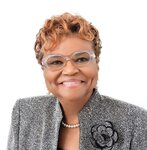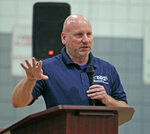


A meeting on the use of White Street Landfill to dispose of contaminated soil from Bingham Park took place on June 12 at Peeler Recreation Center.
This was one of a series of meetings held by city leaders and staff during the last few months to receive public feedback on the next steps for the remediation of Bingham Park.
The city has released a proposal with three different options for soil disposal, with White Street Landfill seeming to be the favored choice based on the cost. With only a 6-mile difference, and an estimated cost in the range of $24 to $27 million, White Street is the least costly option, about $12 to $30 million cheaper than the other options: the Great Oak Landfill in Asheboro and Uwharrie Landfill in Troy. The city currently has $19 million, from federal and state funds, earmarked for the remediation plan.
However, this meeting’s format was different, in that after a short presentation by city staff, attendees were directed into three different breakout sessions focusing on Bingham Park remediation, White Street Landfill, and the environmental action plan by the city.
Some audience members pushed back against the breakout sessions, saying that it needed to be a group discussion. Attendee Chad Martin questioned why the city did not have breakout sessions for the other two landfill options – Uwahrrie and Troy.
“We have seen communities not be heard. When you talk about there are two other options, but only offer information on this one option, you’ve already basically made your decision,” said Martin.
Malinda Pagett, a District 2 resident, also pushed back on the breakout sessions.
“To me, a lot of the people here aren’t even aware of what toxins will be coming into their community from what they are moving,” Pagett said. “We don’t even want those other two options, because they are still in Black neighborhoods. We can barely get economic development over here because of the toxins that are already here.”
In the breakout sessions, community members asked questions about the type of toxins that were going to be disposed in White Street Landfill and how they could be sure the community will be safe from them. Testing results shared by the city show high levels of lead, arsenic and iron at Bigham Park.
“This is a highly engineered material that is designed to withstand full capacity of the waste and water. That material is designed to withstand the pressure of waste for the lifespan of a landfill,” said Jason Watkins, Solid Waste Section Chief, of the NC Department of Environmental Quality. He added that landfills across the state are closely monitored daily and up to 30 years after they close.
The community around White Street Landfill fought hard for years to get it closed and finally saw some relief when it was closed to household waste in 2005. White Street now only accepts construction and yard debris. The city would have to update the landfill’s permits in order to allow the tons of soil to be disposed of at the White Street Landfill.
District 2 Council member Goldie Wells asked attendees to participate in the breakout sessions and ask questions in order to make an informed decision based on facts, and not emotions. The city recently hosted a series of tours over three days of the White Street Landfill, in order to show residents how the landfill works now that it has restrictions on the materials allowed in it.
“Some of you’ve never been to the White Street Landfill. You don’t know where Bingham Park is. You just got into the fury of the thing,” Wells said. “We want to make an informed decision and we want you to make an informed decision.”
She went on to say, “I want people to deal with the facts of the issue. We need to eradicate the problems in one neighborhood; and we have the provisions in another. It’s going into a regulated landfill,” said Wells, adding that in the city’s search across the state for landfills, only three were qualified to take the contaminated soil.
Some residents are concerned that the city’s plan is divisive, pitting two Black neighborhoods against one another.
“As a resident of the Bingham Park community, for me, the main thing for us is human safety. We would love a big community park, but our main concerns are what are the health effects that have already had an impact on our community, that we knew nothing about, and now how this waste is going to impact another Black community,” said Courtney Ullah, member of the Bingham Park Environmental Group.
The issue could come before the Greensboro City Council as soon as its July 16 meeting.